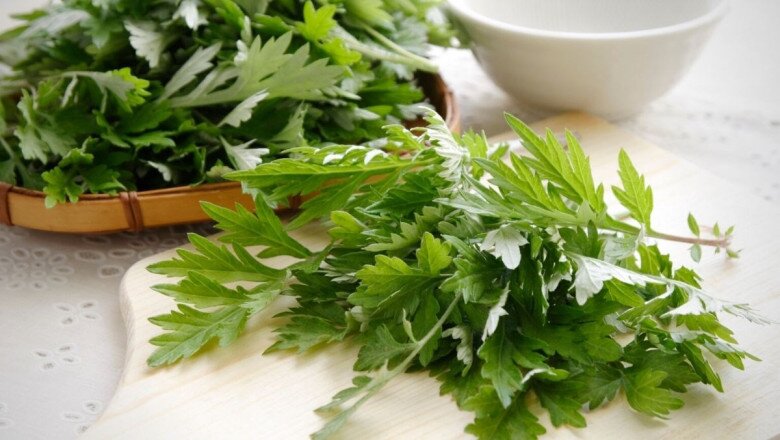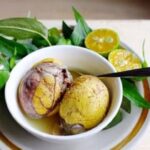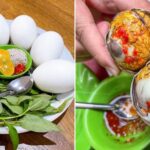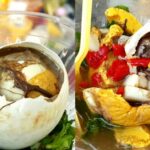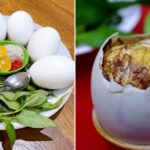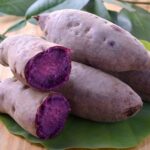In addition to its medicinal properties, ngải cứu (a type of herb) is also used in a variety of delicious and nutritious dishes. It is commonly cooked with chicken to make a flavorful soup, or combined with balut eggs, fried to a crisp, made into a porridge, or used in baking. Whether in savory or vegetarian dishes, ngải cứu adds a unique flavor that is both rustic and healthy.

One of the most notable dishes featuring ngải cứu is the famous bánh ngải from Lạng Sơn. This delicacy is made from glutinous rice flour, mung bean paste, and the key ingredient – ngải cứu leaves. The leaves are ground and mixed with the flour, imparting a distinctive color and flavor to the dough. When eaten, the bánh ngải offers a perfect blend of sweet mung bean paste, chewy glutinous rice, and a subtle bitter note from the ngải cứu, resulting in a highly addictive treat.
Bánh ngải is not just a simple dish but also carries the cultural essence of Lạng Sơn. It is a cherished tradition passed down through generations, becoming a special gift for visitors to the region. Bánh ngải is often served with a drizzle of honey or coconut milk, enhancing its appeal and unique flavor.
With its amazing health benefits and distinct flavor, ngải cứu deserves a permanent place in every household’s kitchen.
Check out the recipe for bánh ngải below:
Ingredients:
– A handful of ngải cứu, 300g glutinous rice flour, black sesame seeds to taste, roasted peanuts to taste, 100g wheat flour, 1 teaspoon of baking powder, 30g lard, sugar to taste.
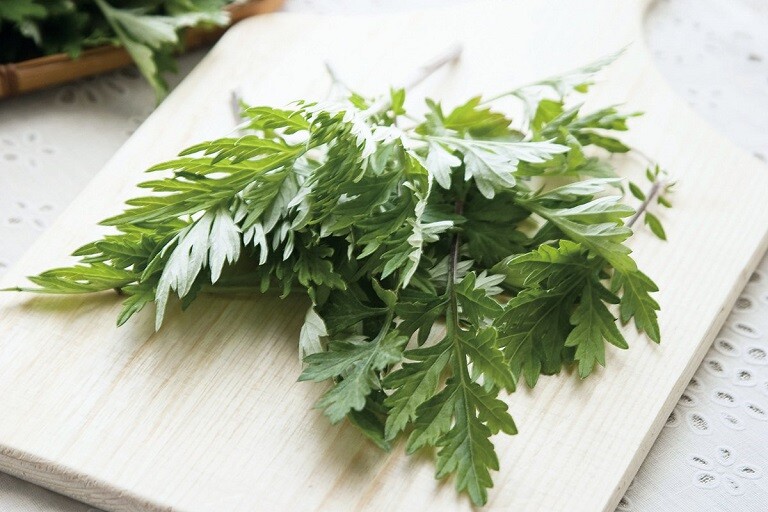
Instructions:
Toast the black sesame seeds on low heat (an oven can be used) until they are slightly browned, then grind them into a fine powder. Roast and shell the peanuts, then crush them into small pieces. Grind the sugar into a fine powder.
Combine the crushed peanuts, black sesame powder, sugar, and lard (or peanut oil) and mix well. Shape the mixture into small balls and store them in the refrigerator for later use.
For the green dough, pick young ngải cứu leaves and wash them thoroughly. Boil some water in a pot and add 1 teaspoon of baking soda (to preserve the green color). Blanch the leaves for about 2-3 minutes, then soak them in cold water for 3 minutes before blending into a smooth puree.
In a large bowl or pot, mix the wheat flour and glutinous rice flour. Gradually add the ngải cứu puree and knead until you form a soft, elastic dough.
Divide the dough into equal portions, then flatten each piece and place a peanut ball in the center. Wrap the dough around the filling, making sure it is completely enclosed. You can use a mooncake mold to shape the bánh ngải if desired.
Place the bánh ngải in a steamer lined with oil-absorbing paper. Bring the water to a boil and steam the cakes for about 12 minutes.
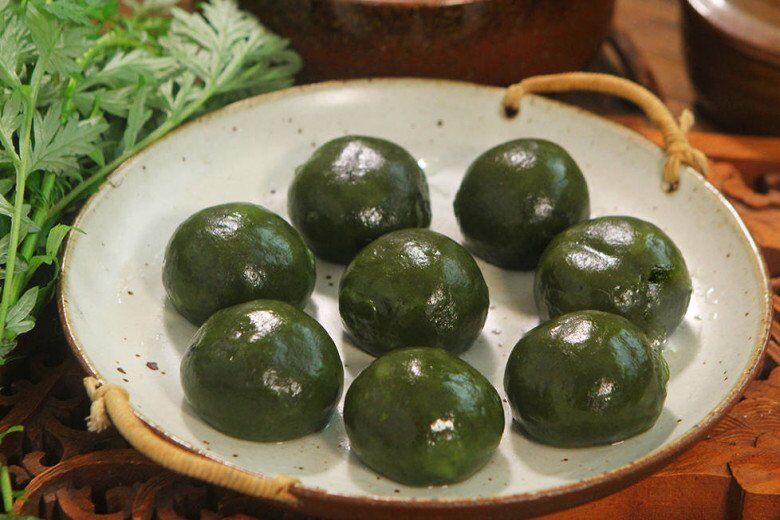
Your sweet and savory bánh ngải is now ready to be enjoyed! They are best served hot, offering a soft and chewy texture with a subtle bitter note from the ngải cứu. This dish makes for a wonderful breakfast or snack.
“6 Groups Who Should Steer Clear of Balut: A Delicious Delicacy With Potential Health Risks”
Eggs have long been a staple food for humans, offering a cheap and convenient source of protein. However, one particular type of egg has divided opinions and palates across the globe – the duck embryo egg, or ‘balut’. This delicacy is loved and loathed in equal measure, and while it is undeniably nutritious, it is not for the faint-hearted or those with certain health conditions.
Sure, I can assist with that.
## Eat Balut to Ward Off Bad Luck: Do These Two Things to Make Sure the Jinx is Lifted
With a deft hand and an eye for detail, I craft words that dance across the page, capturing the essence of your brand and bewitching your audience. The humble balut egg, a delicacy in many Asian cultures, is often associated with folk beliefs of dispelling bad luck. To harness this purported power, two crucial steps must be followed with precision.

























